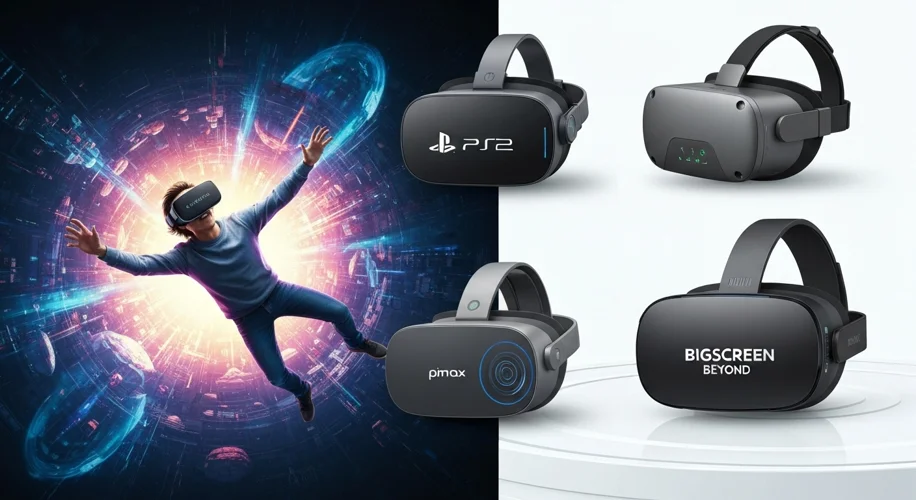Hey everyone! Mateo here. With 2025 already in full swing, the VR landscape is still evolving, and picking the right headset can feel like a quest in itself. Whether you’re a seasoned gamer or just dipping your toes into virtual worlds, there’s a ton of new tech out there. Today, I want to break down some of the hottest VR headsets hitting the market, giving you the lowdown on what makes them tick.
The Contenders:
- Meta Quest 3S: This is the budget-friendly option from Meta, often seen as an upgrade from the Quest 2. It’s fantastic for standalone experiences and casual gaming. Think easy setup, decent mixed reality, and a straightforward entry into VR without needing a powerful PC. It’s perfect if you’re mostly interested in social VR apps, casual games, or VR fitness.
- Meta Quest 3: The workhorse of the Meta lineup. It ups the ante with significantly better mixed reality capabilities thanks to its color passthrough, improved lenses, and a more powerful processor. This is your go-to if you want a solid standalone VR experience that can also handle PCVR streaming (both wired and wireless) really well. It’s a great all-rounder for gaming, productivity, and exploring mixed-reality applications.
- PlayStation VR2 (PSVR2): If you’re already in the PlayStation ecosystem, the PSVR2 is a compelling choice. It boasts excellent OLED displays, eye-tracking for foveated rendering (which helps performance), and haptic feedback in the headset and controllers. It’s a console-focused VR experience, meaning your library is tied to PlayStation exclusives, but those games are often top-notch.
- Pico 4 Ultra: While not as widely discussed in some circles, Pico has been making waves. The Pico 4 Ultra often competes with the Quest 3, offering a slimmer profile and good pancake lenses for a wider field of view. It also offers standalone VR and PCVR compatibility. It’s a strong contender if you’re looking for alternatives to Meta’s offerings.
- Bigscreen Beyond 2: This one is for the hardcore enthusiasts. Bigscreen headsets are known for their incredibly small form factor and custom-fit approach. The Beyond 2 focuses on delivering a premium PCVR experience with a super lightweight design, ideal for long sessions. The trade-off is that it’s PC-only and requires a higher-end PC to really shine.
- Pimax Crystal Light: Pimax is synonymous with wide fields of view and high-resolution displays. The Crystal Light aims to bring some of that Pimax magic to a more accessible price point. If you crave that expansive, immersive view and don’t want to compromise on clarity for PCVR, this is definitely one to keep an eye on. It’s built for PCVR and demands a powerful system to match its specs.
What to Consider When Choosing:
- Budget: This is always the big one. The Quest 3S is the most wallet-friendly. The Quest 3 sits in the middle, while the PSVR2 is tied to the PlayStation ecosystem. The Bigscreen Beyond 2 and Pimax Crystal Light are typically at the higher end, especially when you factor in the PC hardware needed.
- Use Case:
- Casual & Standalone: Quest 3S or Quest 3 are your best bets. Easy to pick up and play, no extra hardware required.
- Console Gaming: PSVR2 is the clear choice if you have a PlayStation.
- High-Fidelity PCVR: Bigscreen Beyond 2 or Pimax Crystal Light are designed for this, offering premium visuals and immersion, but require a powerful gaming PC.
- Mixed Reality: Quest 3 offers a really solid mixed-reality experience for the price.
- Lenses: Most newer headsets are adopting pancake lenses (like Quest 3 and Pico 4 Ultra) which offer a slimmer profile and a clearer image edge-to-edge compared to older Fresnel lenses. Eye-tracking, found in the PSVR2, allows for foveated rendering, which means the headset can render where you’re looking in higher detail, saving processing power.
- PCVR Compatibility: If you plan on playing PCVR titles, ensure the headset you choose supports it well. Both Quest headsets are excellent for wireless PCVR streaming with the right setup, while the Bigscreen and Pimax are exclusively PCVR.
Ultimately, the best VR headset for you in 2025 depends on what you want to do and how much you’re willing to spend. There’s no single ‘best’ for everyone, just the best for you.
What headset are you eyeing? Let me know in the comments!

